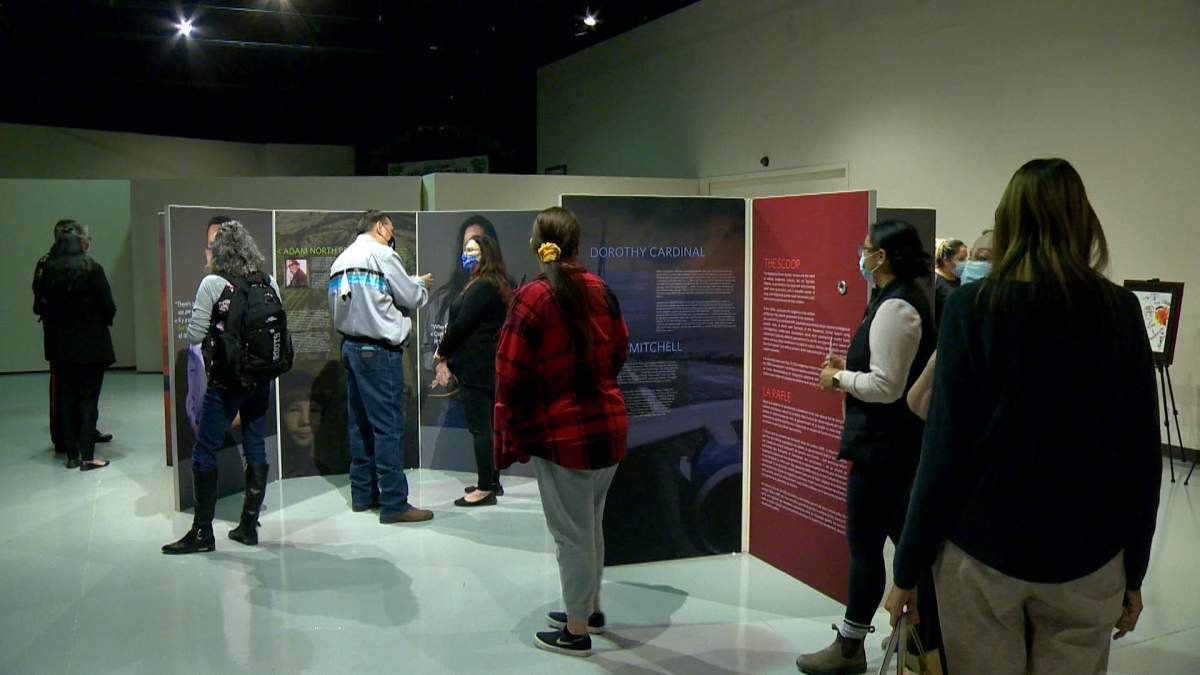An exhibit that tells the history and impacts of the ’60s Scoop stopped at the Western Development Museum (WDM) in Saskatoon on Wednesday.

The Sixties Scoop led to an unknown number of First Nations, Métis and Inuit children taken from their parents, families and communities by child intervention services and placed in non-Indigenous families, according to organizers.
Legacy of Hope Foundation president Adam North Peigan said the national exhibit is an opportunity to share and educate with the experiences of survivors, including 12 personal testimonials.
“The reason that we brought this exhibit to Saskatoon today is as an opportunity to educate mainstream Canadians on the legacy and the atrocities of Sixties Scoop in Canada,” North Peigan said.
“I think a lot of Canadians really understand and are aware of the residential school but what Canadians need to understand is that there was something else that happened beyond the residential schools that was just as traumatic.

Get breaking National news
“And that was the Sixties Scoop, where Indigenous children were forcibly removed from their communities, their homes, their families and put into non-Indigenous foster homes and adoptions right across Canada and globally.”
WDM Saskatoon branch manager Jason B. Wall said the Sixties Scoop, which refers to government practices across Canada from the 1950s to the 1980s, didn’t take place that long ago.
“It’s a relatively still recent event that occurred and we just want to educate people about that and it’s all part of moving towards truth and reconciliation with the Indigenous people for some of the travesties that occurred in the past,” Wall said.
“One of the things that tends to get overlooked is the variety of cultures that the (WDM) actually engages with and wants to tell their story. Saskatchewan wasn’t built by one culture. It’s built by many different cultures and we want it to be inclusive as much as possible. And this is a wonderful way to bring that inclusivity to Saskatoon.”

The travelling exhibit, known as Bi-Giwen: Coming Home — Truth Telling from the Sixties Scoop, has also made recent stops in Regina, Prince Albert, Yorkton and Swift Current.
“On Friday, we’re going to wrap things up in North Battleford and it’s been a very, very terrific experience,” North Peigan said.
“What we’ve encountered thus far is it’s been very well received in Saskatchewan and we’d like to think that it’s really opened the eyes to a lot of people in the province of Saskatchewan on the atrocities that we’ve had to face.
“I think education is a very powerful tool and if it’s used in a good way, we can really foster and promote reconciliation. And today is a day to educate mainstream Canadians in Saskatoon on … the cultural genocide that happened in Canada with respect to the Sixties Scoop.”


Comments